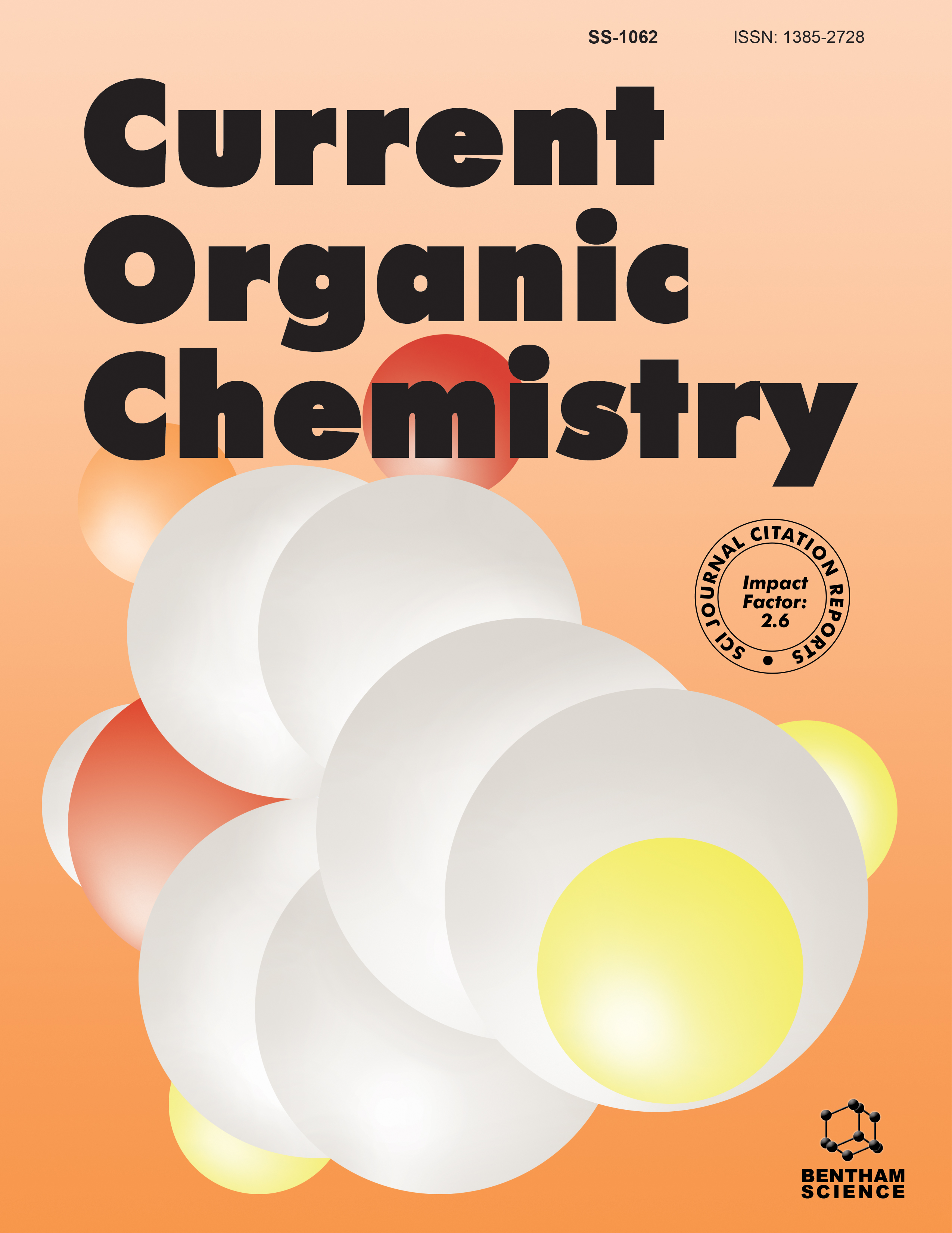- Home
- A-Z Publications
- Current Organic Chemistry
- Previous Issues
- Volume 7, Issue 15, 2003
Current Organic Chemistry - Volume 7, Issue 15, 2003
Volume 7, Issue 15, 2003
-
-
PREFACE [Hot topic: Mass Spectrometry (Guest Editor: Athula B. Attygalle)]
More LessMass spectrometry has made outstanding progress in recent decades. By awarding the Nobel Prize for 2002 for chemistry to Drs. John B. Fenn and Koichi Tanaka, the scientific community has recognized the revolution mass spectrometry has made in identifying and analyzing large biological molecules. Therefore a dedicated issue on current topics in mass spectrometry is very appropriate. While writing this preface, I realized Read More
-
-
-
High Resolution Tandem Mass Spectrometry for Structural Biochemistry
More LessAuthors: Kristina Hakansson, Helen J. Cooper, Robert R. Hudgins and Carol L. NilssonTandem mass spectrometry (MS / MS) is a well-established technique for determining biomolecular primary sequences. The main advantages of MS / MS analysis compared to more traditional sequencing techniques are speed of analysis, sensitivity, high resolution and high mass accuracy. Currently, the highest performance (highest resolution, highest mass accuracy) mass analyzer is the Fourier transform ion cyclotron res Read More
-
-
-
Sourcing Organic Compounds Based on Natural Isotopic Variations Measured by High Precision Isotope Ratio Mass Spectrometry
More LessAuthors: Sven Asche, Anthony L. Michaud and J. T. BrennaHigh precision isotope ratio mass spectrometry (IRMS) enables the detection of variability in isotope abundance due to natural processes. IRMS instruments are highly specialized for the analysis of 13 C / 12 C, 2 H / 1 H, 15 N / 14 N, 18 O / 16 O, and 34 S / 32 S via analysis gases CO 2, H 2, N 2, and SO 2 using a tight electron impact ion source, high transmission magnetic sector, and multiple collectors, delivering relative stand Read More
-
-
-
Formation of Neutrals of Interstellar Significance in the Gas Phase by One- Electron Oxidation of Precursor Anions of Known Bond Connectivity
More LessAuthors: Suresh Dua, Stephen J. Blanksby, Salvatore Peppe, Andrew M. McAnoy, Tom Blumenthal and John H. BowieIn principle, Franck-Condon one-electron oxidation of an anion of known bond connectivity in a collision cell of a mass spectrometer may give the corresponding neutral. This neutral may be transmitted to a second collision cell in which it may be ionised. In order to be detected in the second cell, a neutral must be stable for the 10 -6 sec between formation in one collision cell and ionisation in the second. If the neutrals are co Read More
-
-
-
Gas Phase Reactions of Radical Cations of Halogenated Arenes and Alkenes: The Radical Cation Mediated Nucleophilic Substitution at C(sp2) Atom
More LessRadial cations of unsaturated organic hydrocarbons are reactive intermediates of many important chemical reactions. In particular, the rate constants of the reactions of these electron deficient species with electron rich reactants are increased by several orders of magnitude compared to the reaction between neutral partners. This effects has been termed “electron hole catalysis”. To get insight into the mechanism(s) of Read More
-
-
-
Electrospray-Ionization Mass Spectrometry for Protein Conformational Studies
More LessThe possibility to study large molecules and their non-covalent interactions by mass spectrometry (MS) has opened novel ways to investigate protein folding and binding reactions. MS can be applied to protein conformational studies in two conceptually different ways. One approach uses MS to monitor mass changes produced by conformation-sensitive reactions, such as hydrogen / deuterium (H / D) exchange, alkylation a Read More
-
-
-
Unprecedented Matrix-Induced Reduction of Flavins Observed Under FAB and MALDI Conditions
More LessAuthors: Yoko Ohashi and Yoshiyuki ItohFlavin-derived compounds such as riboflavin, riboflavin 5'-phosphate (flavin mononucleotide, FMN) and flavin-adenine dinucleotide (FAD), under matrix-assisted laser desorption ionization (MALDI) and fast atom bombardment (FAB) conditions produce unprecedented reduced species that can be attributed to [M+2H]+. and [M+3H]+ in addition to the anticipated [M+H]+ ions. On the other hand, electrospray ionization (ESI) con Read More
-
-
-
Comparison of Dissociation of Ions in an Electrospray Source, or a Collision Cell in Tandem Mass Spectrometry
More LessAuthors: Corinne Bure and Catherine LangeElectrospray ionization (ESI) is a soft ionization technique well suited for producing gas phase ions of biological macromolecules. The use of ESI when combined with collision-induced dissociation and mass analysis can give structural information about biomolecules. Traditionally, collisional fragmentation is carried out by tandem mass spectrometry. Several commercially available instruments permit tandem mass spectrom Read More
-
Volumes & issues
-
Volume 29 (2025)
-
Volume 28 (2024)
-
Volume 27 (2023)
-
Volume 26 (2022)
-
Volume 25 (2021)
-
Volume 24 (2020)
-
Volume 23 (2019)
-
Volume 22 (2018)
-
Volume 21 (2017)
-
Volume 20 (2016)
-
Volume 19 (2015)
-
Volume 18 (2014)
-
Volume 17 (2013)
-
Volume 16 (2012)
-
Volume 15 (2011)
-
Volume 14 (2010)
-
Volume 13 (2009)
-
Volume 12 (2008)
-
Volume 11 (2007)
-
Volume 10 (2006)
-
Volume 9 (2005)
-
Volume 8 (2004)
-
Volume 7 (2003)
-
Volume 6 (2002)
-
Volume 5 (2001)
-
Volume 4 (2000)
Most Read This Month
Article
content/journals/coc
Journal
10
5
false
en


